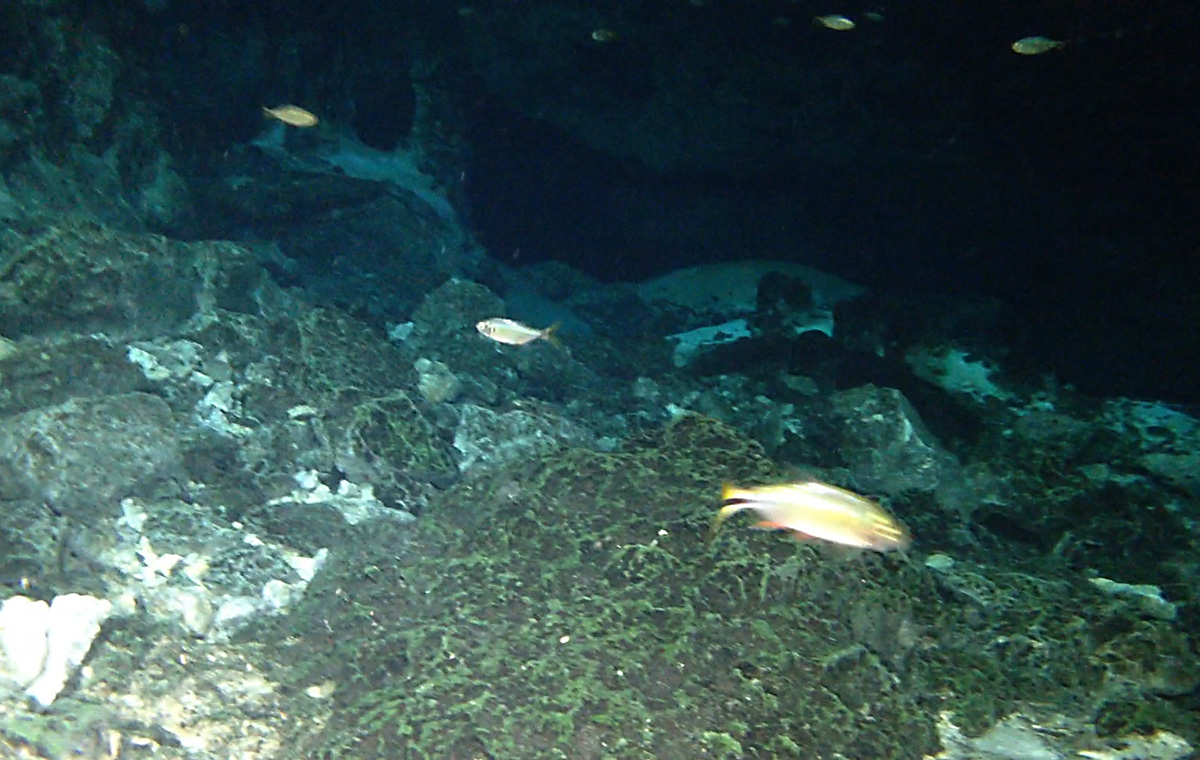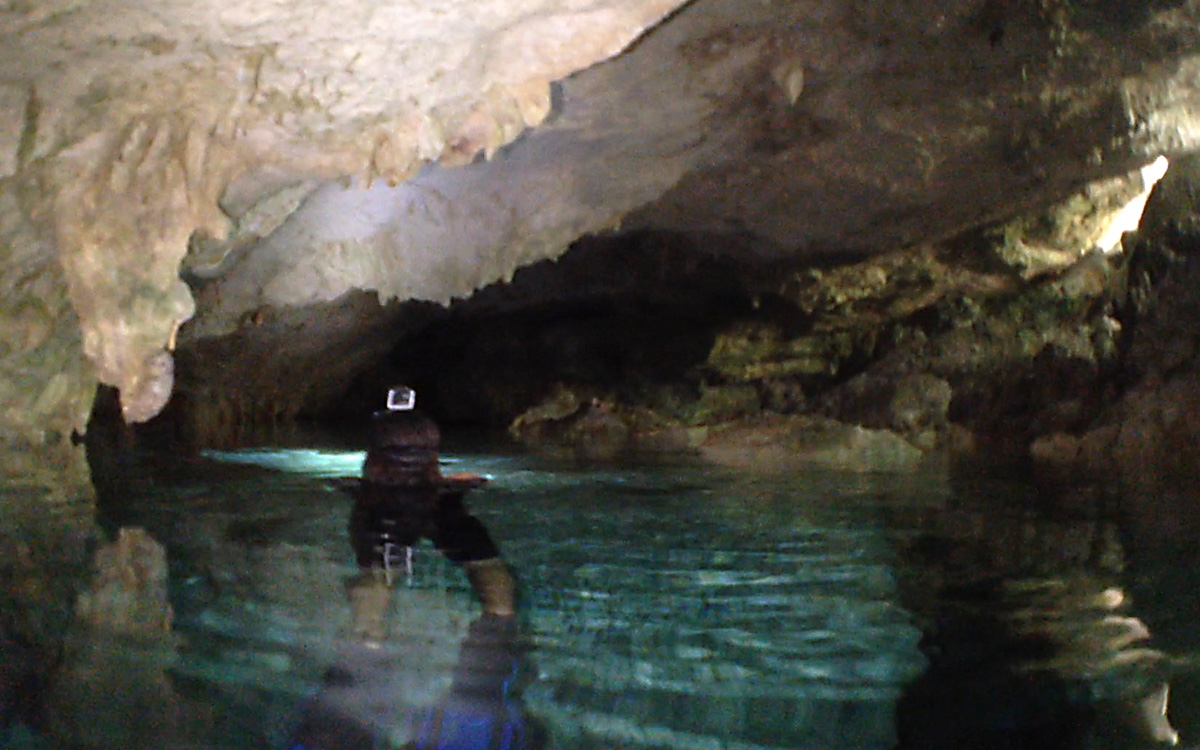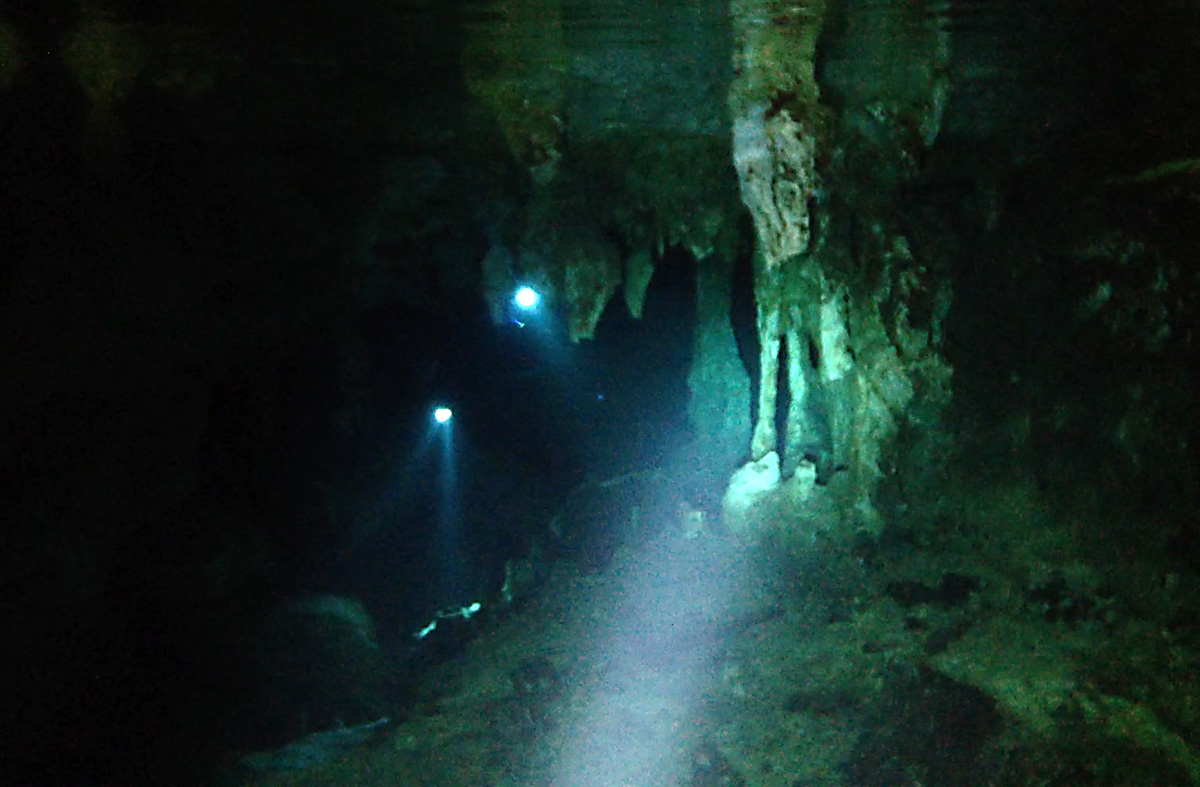The Dos Ojos Cenotes
..continued from Diving MUSA (Underwater Museum of Art)
The Cenotes of Yucatan Mexico were the sacred wells of the Mayan people, regarded as gateways into the afterlife. To appease their gods, they sacrificed precious artifacts or even themselves into the dark waters of these caves, leaving remains on the cavern floors for many centuries. Today, these pools draw thousands of tourists each day, and serve as windows into an ancient era – a time when they were a source of water and life, and were conversely gateways into a hellish underworld. Just north of Tulum, Dos Ojos, meaning “Two Eyes”, is one such place – aptly describing two cenotes connected by an underwater passage. It is one of Yucatan’s most popular caverns, bringing visitors local and abroad to dive in its pools and underwater chambers.
I, however, would not be diving on this trip. I dove the Tajma-Ha Cenote last year, and though it was amazing, it scared the shit out of me. I don’t regret it, but the truth is that I’m still a beginner. And despite the otherworldly beauty just beneath the surface, I’m not ready yet to risk becoming another statistic in the region’s history of cave diving accidents. Or to appease any of the Mayan gods while I’m at it.
So when I got to Tulum last spring, I walked down the main street and looked for a snorkeling guide. I found an outfitter and told them that I wanted to snorkel at Dos Ojos. They signed me up and told me to come back at 8 the next day. When I did, 8 turned into 9 and I met up with two young guys at a nearby dive shop. They drove me a few miles out to the park entrance. One of them stayed behind while the other guide, Carlos, led me on a short trail to the cave entrance.
I think I’m the kind of adventurer who tends to focus on exploration and I don’t often take time to find out the details of things. I just move from place to place. This is especially true when it comes to the natural history of an area. So it is always interesting to meet people like Carlos, who was the exact opposite. As we walked the path down to the cave entrance, he could tell me the name and history of each tree that we passed. A few times he pointed out a tropical bird somewhere up in the tree canopy that I clearly didn’t have the trained eye to spot.
We got to one of the eyes of the caves, and already I was glad to cool off. Little birds nested in the cracks all along the ceiling. Blue water illuminated the ceiling and walls above and below the surface. We swam around the entrance for a few minutes and then Carlos pointed out an underwater passage leading to the other eye of Dos Ojos. We didn’t try it, but I dove down and saw the blue, sunlit opening from 40 feet away – easily doable with a tank.
We passed through a small, winding tunnel into the darkness. It went for thirty feet at the water’s surface and opened into the Bat Cave, a large chamber with a sinkhole in the ceiling and bats nesting everywhere. At night, they fly out in search of food, and at day they rest above the water. When we swam back to the entrance, I saw the dive line and two divers coming out of a chamber 20 feet down, with lights flashing and illuminating the columns and walls of the cavern. It made me want to come back and dive it.
Later, the other guide told me that Dos Ojos has a maximum depth of 8 meters, which is certainly doable. Perhaps I’ll try it again after some more practice in open water. I still have to work out the rough edges when it comes to equalizing, buoyancy, and breathing. Is it safe or wise to have a hobby like this? Probably not. But those caves are too fucking sweet not to try. Or at the very least, snorkel them and freedive into the darkness.
This story continues on The Streets of Centro Havana










